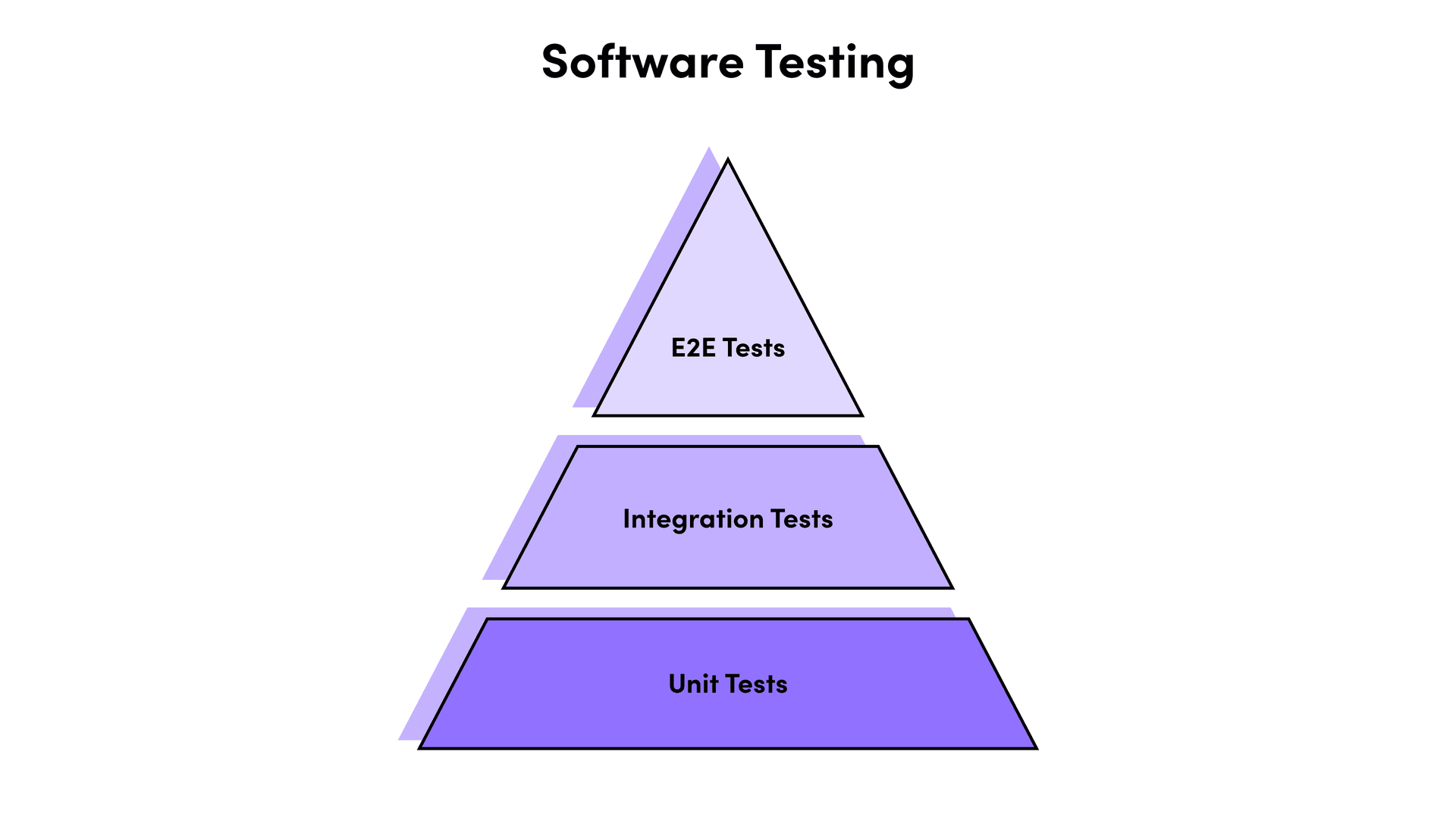

Testing is an integral part of software development process but sometimes it is omitted because of tight budget or the lack of time. And that’s a mistake. While some software bugs may be harmless, other may turn out to be costly and have dangerous outcomes.
That’s why every product should be thoroughly checked before the final release and even after that. Software testing is an ongoing process that is a must in every product that brings value to its users.
What is software testing? Also, what are the types of testing commonly used in software development? What is the software testing life cycle? And lastly, what can you gain from such tests? Learn it all here.
What is software testing?
Software testing is the process during which a product team check if the digital product fulfils the expected requirements in terms of security, accessibility, integrity, user experience, and more.
Testing is not only about whether the app is defect free. It’s also about software quality. So, the goal of software testing is to identify bugs, errors, gaps in the code as well as missing user flows. It involves various methods to test the product from different angles to prepare the product for the release.
It’s evaluating an object or system’s behaviour through validation and verification where different types of tests are involved (manual testing, automated testing).
In software engineering, testing can also help businesses assess risks associated with software application implementation in an objective way. It’s an efficient method for identifying and evaluating software quality and its risks and benefits to users.
Why is software testing important?
A rigorous software testing process ensures robust and reliable software operations. Also, testing is essential because it discovers errors before the product is released to the market.
So the sooner you start testing your product, the better. Why? Because as you go on with the process, you’ll have fewer and fewer problems on the way as the process will be iterative.
So what do you get from a well-tested software? Let’s take a look.


Reliable product
Software testing can be used to strengthen the reputation of a business by providing a quality product to the customer. Because of this, software testing becomes an integral part of software development processes.
Improved security
Probably the hardest test part. Nowadays, with all the sensitive data involved, the focus on app’s security is crucial. Software testing helps protect your products against malware attacks. It ensures their reliability and thus, it’ll be wanted by users since people are always looking for trusted solutions.
Cost-effectiveness
Performing tests from the very beginning of software development, helps you save money and time for the long run. Because the earlier you catch some software defects, the less costly it’ll be to fix them.
Improved user satisfaction
Thanks to usability tests, the solution is approved by its target audience and it meets their needs. So a well-tested product is a valuable product that users will appreciate and use of. All in all, you get the finest code which translates to a product that customers love. And happy customers mean increased sales.
Functional vs non-functional requirements
Before we move on to the common types of software testing, let’s consider the basic levels of software quality – functional and non-functional aspects. So while in the first one it’s about user experience, the second one is more about the solution’s architecture (its portability, maintainability, performance and more).
More about this topic in my other article – How to take care of software quality – the process.
Our experience in software testing
There are a number of ways in which tests can be categorised. I’d like to propose the following categories – code, performance, product and other tests.
Code testing
In code testing we can enumerate tests such as:
- Unit testing
During unit testing, a tech team examines each and every unit of code in the project. Those tests verify that individual, isolated parts work as expected. - Integration testing
In the integration testing, we can examine whether several units of the app work properly together. - End-to-end testing
This is the functional testing of the entire software system. Thanks to this we can check if the user flow works as is should.
Performance testing
- Smoke testing
Aims to verify that your system can handle minimal load, without any problems. - Load testing
Primarily concerned with assessing the performance of your system in terms of concurrent users or requests per second. - Stress testing and spike testing
Concerned with assessing the limits of your system and stability under extreme conditions. - Endurance testing
Tells you about reliability and performance of your system over an extended period of time.
Product testing
- Acceptance testing
This is the last stage of testing before the software goes into production. The acceptance testing (or user acceptance testing) is when a client/business/user tests the solution with real time business scenarios. In other words, this is when we check if everything aligns with business requirements. - Alpha testing
It’s a type of validation testing in which the solution is far from perfect – it may have fewer features than planned, its stability may be in question and more. Also, it can be done by the in-house team (it doesn’t have to be the target audience) and it’s usually controlled (as opposed to beta testing). - Beta testing
End-user testing or beta testing is when a product team provides the end-users in their real test environment with a product that is prepared for release.
User tests provide us with the valuable user feedback about the app in terms of its intuitiveness, reliability, robustness and security. Is the app easy to navigate? Which features are must-haves and which are redundant? Thanks to this testing, we can improve user experience and prepare the digital product for release.
More about beta testing as well as black-box testing and white-box testing from the article Michalina, our Project Manager.
Other tests
- Security testing
As the majority of the digital product, contain sensitive data, it’s important to always check the app for any vulnerabilities.
During this kind of testing, the security review team checks the app for any vulnerabilities, holes in a code structure, features with quality issues and more. In short, anything that can expose end-users to various unpleasantries and security breaches. - Usability testing
It’s a method of checking the app’s features by its target audience. In the process, the testers complete a set of given tasks on the app and make observations.
In usability testing group, we can also add exploratory testing that’s carried out by the testing team. The goal is to explore the digital product in search of defects in the app. Here, the testers need to know the business domain to examine the solution properly.
Because it’s a part of UX research, the user feedback greatly impacts the later stages of software development.
Best practices during software testing
Integration testing is a way to go
Vercel‘s CEO Guillermo Rauch once wrote: “Write tests. Not too many. Mostly integration.”. This is really deep and really useful advice. And yet, sometimes, it’s neflected by developers.
For most projects you should write automated tests – especially when you value your time. It is better to catch and fix a bug locally that to break production.
When you thrive for 100% code coverage you spend time testing things that don’t need testing at all. The worst thing that can happen in this approach is testing implementation details. The key to good tests is the thought that you should very rarely have to change tests when you refactor code. As easy as that.
Integration tests are a great balance between confidence they bring and speed/expense. While end-to-end tests give you the most of confidence that your app works as intended, but are slow and expensive (to maintain and to run).
Focus on use cases
What you should think about during software testing is not the code itself but rather the use cases that the code supports. Thanks to this, you’re going to write tests just like your target audience uses the app.
Prioritize features
Before you start testing you app, sit with your team, make a list of functionalities and prioritize them. Thanks to this, you’ll have a great base for all your tests. Start with end-to-end testing and cover the „happy path” (the path the majority of users face for a certain use case). And even though, the e2e tests won’t give you 100% use case overage, they’re great base for software testing process.
Keep it simple
Design for lean testing. In other words, make your testing process easier by creating a short, simple and easy-to-work with code. The goal is to make the testing process as simple as possible so that the process wouldn’t be daunting for the team. Who has time for that? Testing code should be easy and efficient.
Integrate the tests with the CI/CD pipeline
The perfect quality assurance process should be automated. Every change, every alteration made in the code is tested as an integral part of CI setup. Nothing untested goes into production.
And what is the best way to perfom automed tests? In the CI/CD pipeline. In fact, this is how we do it at Gorrion. We’re always include tests in CI/CD pipeline thanks to which we ensure the highest quality of the app at all times.
All in all
Software testing is an important part of every software development process. Because behind every good product stand multiple tests. These include usability tests and load tests that are a part of the application audits that we perform during our software development process. Apply for the audit and let’s get your app up and running in no time!


Have a project in mind?
Let’s meet - book a free consultation and we’ll get back to you within 24 hrs.
Other worthy reads




